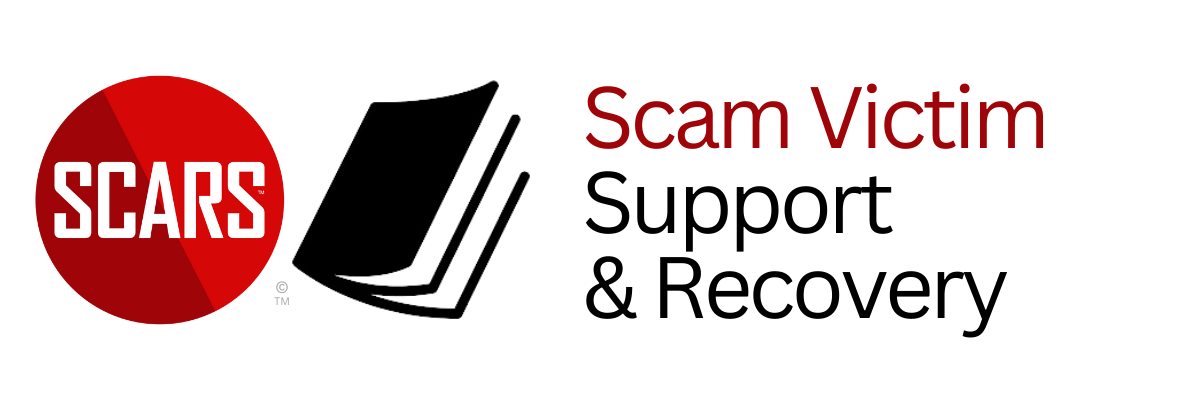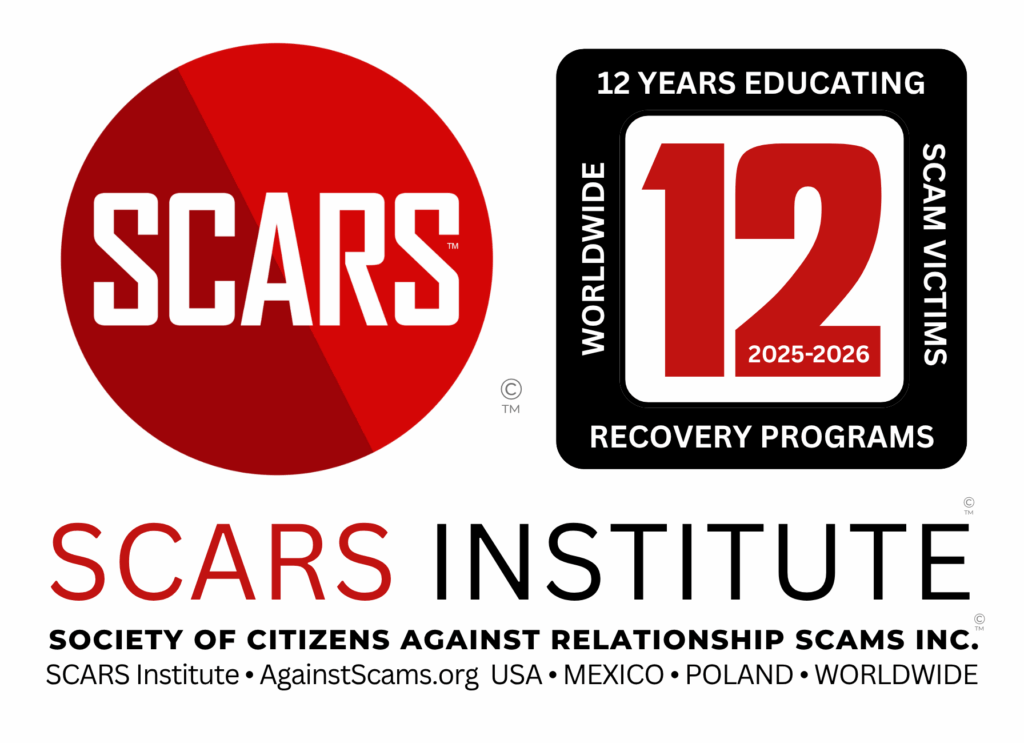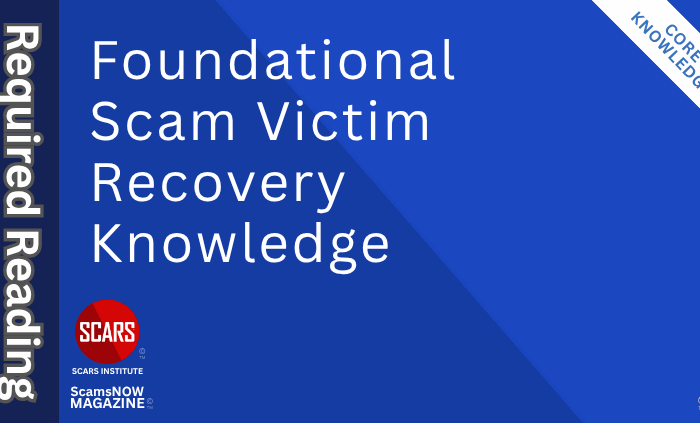Nirvana and the Path to Letting Go of Suffering
Nirvana and the End of Suffering: A Recovery Model of Acceptance for Scam Victims
Primary Category: Scam Victim Recovery Psychology
Intended Audience: Scam Victims-Survivors / Family & Friends
Author:
• Tim McGuinness, Ph.D., DFin, MCPO, MAnth – Anthropologist, Scientist, Polymath, Director of the Society of Citizens Against Relationship Scams Inc.
About This Article
Nirvana, in the Buddhist tradition, means the end of suffering through the release of craving, illusion, and self-clinging—and for scam victims, it offers a meaningful recovery framework. After betrayal and manipulation, you may carry grief, shame, or obsessive thoughts. The Buddha’s own transformation—from protected prince to awakened teacher—shows that healing begins by confronting suffering, not avoiding it. When you stop clinging to fantasies, justice, or past versions of yourself, your pain begins to loosen.
Like the final stage of grief, acceptance, nirvana asks you to stop fighting reality and begin living truthfully. It does not erase emotion, but removes the false attachments that keep pain alive. Through mindfulness, self-forgiveness, and emotional clarity, you can free yourself from the weight of judgment, both toward the scammer and yourself. You are not the betrayal. You are the person who survives it. That shift, when you no longer identify with suffering, is where your personal nirvana begins.

Nirvana and the End of Suffering: A Recovery Model of Acceptance for Scam Victims
Understanding Nirvana as a Psychological and Spiritual Concept
The word nirvana comes from ancient Sanskrit and Pali, and it means “blowing out” or “extinguishing.” In the teachings of Siddhartha Gautama—the historical Buddha—it refers to the extinguishing of craving, ignorance, and suffering. It is not a place, and it is not bliss in the way modern language tends to use the word. Instead, nirvana is the complete release from the causes of suffering. It is a state of profound clarity, peace, and inner freedom.
For scam victims who have been through emotional manipulation, betrayal, and trauma, the idea of nirvana may seem distant or abstract. But at its core, it speaks directly to your experience. You have suffered. You have been deceived. You may be carrying anger, shame, confusion, or grief. The Buddhist path does not ask you to forget what happened. It offers you a structured model for ending the suffering that continues long after the scam itself has ended.
Nirvana is not achieved by escaping reality. It is reached by facing it completely, understanding it clearly, and letting go of the attachments that keep you in pain.
The Buddha’s Own Journey Through Suffering
Before he was the Buddha, Siddhartha Gautama was a prince raised in luxury and isolation. His father shielded him from all suffering, surrounding him with beauty, comfort, and distraction. He married young, had a son, and lived a life many would envy. But as he grew older, Siddhartha left the palace and encountered what his father had tried to hide—sickness, aging, and death. These sights shocked him. For the first time, he realized that suffering was everywhere, and that his privileged life had not protected him from its eventual arrival.
This moment was the beginning of his personal collapse. He abandoned his title, his family, and his possessions to search for the root of human suffering. He tried extreme self-denial, starving himself and subjecting his body to harsh discipline, hoping that this would bring insight. It did not. Eventually, he collapsed physically and emotionally, realizing that punishing the body was no better than indulging it. Both were forms of attachment.
His turning point came when he sat beneath the Bodhi tree and made a vow not to rise until he had understood the truth. What followed was a process of intense introspection, memory, and awareness. He recalled moments of calm and clarity from his childhood. He examined his thoughts without judgment. And gradually, he saw the truth that had eluded him: that suffering is caused not by the events of life, but by the mind’s clinging to them.
He described this awakening not as a supernatural revelation, but as seeing things as they truly are. This moment was his nirvana—the blowing out of illusion, ego, and fear. From this transformation, the Buddhist path was born.
The Four Noble Truths and the Path to Ending Suffering
After his awakening, the Buddha taught what he called the Four Noble Truths. These truths form the structure of the recovery journey for anyone who suffers, including scam victims.
-
There is suffering (dukkha).
You do not have to pretend that what happened to you was small. The pain you feel—betrayal, confusion, grief, loss—is real. The Buddha did not deny suffering. He began by naming it. As a scam victim, the first step in your recovery is the same: to acknowledge the emotional and psychological damage, without minimizing or denying it. -
There is a cause of suffering.
Buddhism teaches that suffering is caused by tanha—craving, grasping, and clinging. After a scam, you may find yourself clinging to the past, to questions, to anger, or to the fantasy that the relationship was real. These attachments prolong your suffering. You may be trying to get back to the version of yourself that existed before the scam. This clinging creates more pain than the event itself. -
There is an end to suffering.
This is not a metaphor. The Buddha taught that when you see through illusion, when you stop clinging to what is false or impermanent, suffering ends. This does not mean your memories disappear, or that your emotions vanish. It means you no longer identify with the pain. You do not define yourself by it. The scam happened. But it is not who you are. -
There is a path that leads to the end of suffering.
The Buddha taught the Eightfold Path—a set of ethical, mental, and emotional practices that lead to clarity and freedom. While not every detail may apply to scam trauma, the underlying principle holds: recovery is not passive. It is a path that must be walked, consciously, step by step.
How Scam Victims Can Use This Model
You do not need to become a Buddhist to use this framework. What matters is the structure of the insight. Scam trauma is not just about what was done to you. It is about how the mind holds on to the story, the wound, and the fantasy.
The idea of nirvana offers a clear alternative to the cycle of obsession and despair. It suggests that you can stop clinging to the scammer’s image. You can let go of the need to make sense of every lie. You can release the craving for closure, justice, or apology. These are real desires, but they are also traps.
Letting go does not mean approving of what happened. It means recognizing that continuing to suffer does not repair the harm. The scammer is gone. What remains is your inner world. That is where your work begins.
Letting Go of Identity Clinging
One of the most painful parts of scam trauma is the collapse of identity. You may ask yourself, How could I fall for this? Who was I during that time? Can I trust myself again?
In Buddhist terms, these questions are based on a false premise—that there is a fixed, solid self that must be preserved or restored. But the Buddha taught that the self is always changing. It is a process, not a possession. When you try to cling to a version of yourself that no longer exists, you suffer.
You can grieve who you were, but you do not need to rebuild that person. You can instead let yourself evolve. The goal is not to erase what happened, but to stop identifying with the wounded version of yourself. You are not broken. You are becoming someone new.
Mindfulness as a Path to Clarity
Central to the path of nirvana is sati—mindfulness. This is the practice of observing thoughts, emotions, and physical sensations without judgment or reaction. For scam victims, mindfulness offers a way to reclaim control of your attention. Instead of being pulled into shame spirals or fantasy loops, you learn to notice those thoughts as they arise and let them pass.
You might feel anger, sadness, or loneliness. Mindfulness does not make those feelings disappear. It shows you that they are temporary. They are weather systems moving through your mind. You are not your emotions. You are the one who observes them.
Practicing mindfulness daily—even for ten minutes—can help you see patterns in your thinking. You begin to recognize the inner voice that keeps you trapped. And slowly, you learn to respond to that voice with awareness instead of fear.
Rebuilding from Truth, Not Illusion
One of the most damaging parts of a scam is the way it fills your life with illusion. The scammer created a false identity. You may have created a future with them in your mind. When it all collapses, you are left not just with pain, but with the feeling that your entire reality was fake.
Nirvana begins when you commit to truth. Not external truth alone, but inner truth—what you actually feel, think, and need. You stop performing wellness. You stop pretending you’re fine. You tell the truth to yourself. You grieve without censorship. You forgive yourself without needing to be perfect.
From that ground, you can rebuild. Not a fantasy life, but a real one. Not a perfect version of you, but an honest one.
Accepting Impermanence and Moving Forward
In Buddhism, all things are impermanent. Every emotion, every attachment, every relationship—even betrayal—is temporary. This does not mean your pain is invalid. It means it will not last forever.
The path to nirvana is not about removing pain. It is about ending the conditions that keep it alive. When you learn to see pain as part of the process, not as your identity, you create space for something else—awareness, compassion, and peace.
This peace is not the absence of feeling. It is the absence of illusion.
Acceptance and Nirvana: The Convergence of Grief and Awakening
In many psychological models of grief, the final stage is called acceptance. This is not the same as approval or indifference. It does not mean that what happened was fair or justified. Acceptance means you stop fighting the truth. You stop demanding that the past be different. You stop bargaining with reality. You begin to live with what is, rather than what should have been.
In that way, acceptance and nirvana share the same psychological and emotional function. Both mark the point at which suffering no longer controls your internal state. Both represent the moment when you stop clinging to what cannot be changed and begin to release yourself from the cycle of pain.
As a scam victim, you may struggle with this stage more than any other. The betrayal was personal. The deception was deliberate. You may feel that to accept it is to let the scammer win. But that is not what acceptance means. It is not surrender to the abuser. It is surrender to truth.
Nirvana, like acceptance, asks you to see clearly. You are not asked to erase your grief or your rage. You are asked to stop being defined by it. In Buddhist terms, suffering is not caused by pain itself, but by resistance to pain—by clinging to what is gone, to what was never real, or to what should have been. Acceptance is the release of that clinging.
When you reach true acceptance, something changes. You begin to breathe more freely. You stop rehearsing the story every day. The scam is still part of your life story, but it is not the center of your identity. You stop expecting a version of yourself to return. You start seeing who you actually are, here and now.
This moment mirrors what the Buddha experienced under the Bodhi tree. He did not make the world stop aging, or stop hurting. He simply stopped suffering within it. He accepted the nature of life—its impermanence, its unpredictability, its capacity for pain—and in doing so, found peace.
Acceptance does not remove sadness. But it ends the cycle of re-injury. It stops the illusion that healing depends on answers, apologies, or rewinding the past. It is the internal moment when you say: This happened. It hurt. And I can still live.
When you reach that point, you may not realize it at first. There is no great celebration. No one hands you a certificate. But inside, you will feel something loosen. Your thoughts will quiet. Your body will soften. Your need to explain or justify will fade.
This is what nirvana looks like in ordinary life. Not perfection. Not numbness. Just peace, born of truth, held without resistance. You are no longer trying to undo what happened. You are beginning to live again.
Forgiveness as a Form of Nirvana: Releasing the Weight of Judgment
Forgiveness is one of the hardest tasks for scam victims. It may feel undeserved, impossible, or even offensive in the face of deliberate and calculated betrayal. The idea of forgiving a criminal who intentionally groomed, manipulated, and stole from you can seem like erasing the truth or letting them escape accountability. And yet, within the structure of recovery, forgiveness—especially self-forgiveness—can become one of the most powerful steps toward emotional freedom. It can serve as a personal nirvana, the point at which suffering is no longer fed by judgment, anger, or internal punishment.
In Buddhist terms, forgiveness is not about exonerating someone else’s behavior. It is not about forgetting, excusing, or condoning harm. Instead, it is the act of releasing yourself from the mental and emotional bonds created by hatred, blame, or resentment. When you hold onto those feelings—whether directed at yourself or the scammer—they do not injure the other person. They injure you. They keep you emotionally tethered to the trauma. They prevent peace.
Forgiving yourself is often more difficult than forgiving the scammer. You may feel ashamed, humiliated, or disgusted with your own choices. You may call yourself naïve or foolish, replaying every ignored red flag or missed signal. This inner voice may try to punish you as a way to make up for what happened. But in doing so, you reinforce the scammer’s power. You allow their manipulation to continue living inside your mind.
Letting go of that self-judgment is not weakness. It is strength. When you say to yourself, I was vulnerable, I was targeted, and I was harmed—but I am not the crime that was done to me, you separate your identity from the event. You stop defining yourself by failure. You begin to see yourself as whole again.
Forgiving the scammer does not mean that what they did was acceptable. It means you are no longer carrying their actions as your burden. It means you are refusing to let their cruelty control your emotional state. It is not about them. It is about your right to peace.
In this way, forgiveness becomes an act of inner liberation. It is a nirvana—a blowing out of the fire of hate and self-blame. You stop fueling suffering with judgment. You acknowledge the truth, honor your pain, and release your grip on the desire to rewrite what has already happened.
You do not forgive because they deserve it. You forgive because you deserve peace. You deserve to breathe without a weight on your chest. You deserve to move forward without dragging their shadow behind you.
When that moment comes—when you stop needing revenge, stop needing to rewrite the past, and stop punishing yourself for being human—you will feel something shift. Your mind will become clearer. Your heart will feel lighter. And your recovery will no longer be just about survival. It will be about freedom.
That is forgiveness. And that is nirvana.
Conclusion
The Buddhist concept of nirvana—the end of suffering through the letting go of craving, illusion, and attachment—offers scam victims a meaningful path toward emotional and psychological recovery. Siddhartha Gautama’s own journey began with the shock of discovering suffering and reached its turning point when he stopped seeking outside answers and turned inward. Through mindfulness, insight, and honest observation, he uncovered the root of suffering and transcended it. His model was not escape, but clarity.
If you have survived a scam, your mind may be filled with anger, confusion, grief, or shame. These feelings are valid, but they are not permanent. Nirvana does not ask you to forget what happened or to numb your pain. It asks you to see clearly—to recognize that the scammer is no longer here, but your suffering may still be. You have the power to change that.
By following the structure of awakening—acknowledging suffering, identifying its cause, believing in the possibility of change, and walking the path step by step—you can begin to loosen your grip on the illusion and reclaim your peace. This process is not quick. It is not easy. But it is real.
You are not the scam. You are not the illusion. You are the awareness beneath the storm. When you begin to live from that awareness, suffering no longer controls you.
That is your nirvana. And it is possible.
Related Articles
- Wisdom of Malachi – An Old Testament Perspective on the Scam Victims’ Experience – 2025
- A Different Perspective of the Recovery Journey for Scam Victims – 2025
- Letting Go of the Past for Scam Victims – Adapted from Jordan Petersons’ 5 Steps for Seniors – 2025
- A Reflection on Christ’s Suffering and Radical Acceptance of the Worst Possible Outcome – 2025
- The Suffering of Job and How This Applies to Scam Victims – 2025
-/ 30 /-
What do you think about this?
Please share your thoughts in a comment below!
One Comment
Leave A Comment
Important Information for New Scam Victims
- Please visit www.ScamVictimsSupport.org – a SCARS Website for New Scam Victims & Sextortion Victims.
- SCARS Institute now offers its free, safe, and private Scam Survivor’s Support Community at www.SCARScommunity.org – this is not on a social media platform, it is our own safe & secure platform created by the SCARS Institute especially for scam victims & survivors.
- SCARS Institute now offers a free recovery learning program at www.SCARSeducation.org.
- Please visit www.ScamPsychology.org – to more fully understand the psychological concepts involved in scams and scam victim recovery.
If you are looking for local trauma counselors, please visit counseling.AgainstScams.org
If you need to speak with someone now, you can dial 988 or find phone numbers for crisis hotlines all around the world here: www.opencounseling.com/suicide-hotlines
Statement About Victim Blaming
Some of our articles discuss various aspects of victims. This is both about better understanding victims (the science of victimology) and their behaviors and psychology. This helps us to educate victims/survivors about why these crimes happened and not to blame themselves, better develop recovery programs, and help victims avoid scams in the future. At times, this may sound like blaming the victim, but it does not blame scam victims; we are simply explaining the hows and whys of the experience victims have.
These articles, about the Psychology of Scams or Victim Psychology – meaning that all humans have psychological or cognitive characteristics in common that can either be exploited or work against us – help us all to understand the unique challenges victims face before, during, and after scams, fraud, or cybercrimes. These sometimes talk about some of the vulnerabilities the scammers exploit. Victims rarely have control of them or are even aware of them, until something like a scam happens, and then they can learn how their mind works and how to overcome these mechanisms.
Articles like these help victims and others understand these processes and how to help prevent them from being exploited again or to help them recover more easily by understanding their post-scam behaviors. Learn more about the Psychology of Scams at www.ScamPsychology.org
SCARS INSTITUTE RESOURCES:
If You Have Been Victimized By A Scam Or Cybercrime
♦ If you are a victim of scams, go to www.ScamVictimsSupport.org for real knowledge and help
♦ SCARS Institute now offers its free, safe, and private Scam Survivor’s Support Community at www.SCARScommunity.org/register – this is not on a social media platform, it is our own safe & secure platform created by the SCARS Institute especially for scam victims & survivors.
♦ Enroll in SCARS Scam Survivor’s School now at www.SCARSeducation.org
♦ To report criminals, visit https://reporting.AgainstScams.org – we will NEVER give your data to money recovery companies like some do!
♦ Follow us and find our podcasts, webinars, and helpful videos on YouTube: https://www.youtube.com/@RomancescamsNowcom
♦ Learn about the Psychology of Scams at www.ScamPsychology.org
♦ Dig deeper into the reality of scams, fraud, and cybercrime at www.ScamsNOW.com and www.RomanceScamsNOW.com
♦ Scam Survivor’s Stories: www.ScamSurvivorStories.org
♦ For Scam Victim Advocates visit www.ScamVictimsAdvocates.org
♦ See more scammer photos on www.ScammerPhotos.com
You can also find the SCARS Institute’s knowledge and information on Facebook, Instagram, X, LinkedIn, and TruthSocial
Psychology Disclaimer:
All articles about psychology and the human brain on this website are for information & education only
The information provided in this and other SCARS articles are intended for educational and self-help purposes only and should not be construed as a substitute for professional therapy or counseling.
Note about Mindfulness: Mindfulness practices have the potential to create psychological distress for some individuals. Please consult a mental health professional or experienced meditation instructor for guidance should you encounter difficulties.
While any self-help techniques outlined herein may be beneficial for scam victims seeking to recover from their experience and move towards recovery, it is important to consult with a qualified mental health professional before initiating any course of action. Each individual’s experience and needs are unique, and what works for one person may not be suitable for another.
Additionally, any approach may not be appropriate for individuals with certain pre-existing mental health conditions or trauma histories. It is advisable to seek guidance from a licensed therapist or counselor who can provide personalized support, guidance, and treatment tailored to your specific needs.
If you are experiencing significant distress or emotional difficulties related to a scam or other traumatic event, please consult your doctor or mental health provider for appropriate care and support.
Also read our SCARS Institute Statement about Professional Care for Scam Victims – click here
If you are in crisis, feeling desperate, or in despair, please call 988 or your local crisis hotline – international numbers here.
More ScamsNOW.com Articles
A Question of Trust
At the SCARS Institute, we invite you to do your own research on the topics we speak about and publish. Our team investigates the subject being discussed, especially when it comes to understanding the scam victims-survivors’ experience. You can do Google searches, but in many cases, you will have to wade through scientific papers and studies. However, remember that biases and perspectives matter and influence the outcome. Regardless, we encourage you to explore these topics as thoroughly as you can for your own awareness.















![NavyLogo@4x-81[1] Nirvana and the Path to Letting Go of Suffering - 2025](https://scamsnow.com/wp-content/uploads/2025/04/NavyLogo@4x-811.png)









![scars-institute[1] Nirvana and the Path to Letting Go of Suffering - 2025](https://scamsnow.com/wp-content/uploads/2025/04/scars-institute1.png)
![niprc1.png1_-150×1501-1[1] Nirvana and the Path to Letting Go of Suffering - 2025](https://scamsnow.com/wp-content/uploads/2025/04/niprc1.png1_-150x1501-11.webp)

En mi experiencia podría describir el nirvana en mi recuperación como ese estado de paz profunda y liberación emocional que se alcanzas al dejar atrás el dolor, la confusión y la angustia causados por la estafa. No se trata de olvidar lo sucedido, sino de integrar la experiencia sin que me defina ni me atormente.
Antes estabas atrapada en un ciclo de pensamientos obsesivos, reviviendo la estafa una y otra vez, sintiendo la traición y la pérdida. Ese era tu mi ” particular”, tu rueda de sufrimiento.
El nirvana en mi recuperación fue detener esa rueda, fue sentirtme libre de la necesidad de aferrarme al pasado, de buscar respuestas que quizás nunca lleguen, o de desear que las cosas hubieran sido diferentes.
Podrías describirlo como:
Un estado de ecuanimidad: Donde las emociones negativas ya no tienen el mismo poder sobre mi. Senir tristeza cuando es natural, pero no dejarma consumir.
Una profunda aceptación: Aceptar lo que pasó como parte de mi historia, sin negarlo ni minimizarlo, pero sin permitir que dicte mi presente y futuro.
Un sentido de claridad: Ver la situación con perspectiva, comprendiendo las tácticas del estafador y reconociendo mi propia vulnerabilidad sin culparme.
Una conexión renovada conmigo misma: haber reconectado con mi valía , independientemente de la validación externa que buscaba (o creías encontrar) en la relación falsa.
Una apertura al presente y al futuro: Ya no estoy anclada al pasado, sino que me sientes libre para construir relaciones auténticas y significativas en el presente.
Una sensación de paz interior: A pesar de las cicatrices, siento una calma profunda, sabiendo que he superado una prueba difícil y he emergido más fuerte y sabia.
Puedo decir que en esencia, el nirvana en mi recuperación no fur un destino final estático, sino más bien un proceso continuo de desapego del sufrimiento y de cultivo de la paz interior, fue darme permiso para ser feliz y para confiar de nuevo, pero desde un lugar de mayor sabiduría y autoconocimiento.